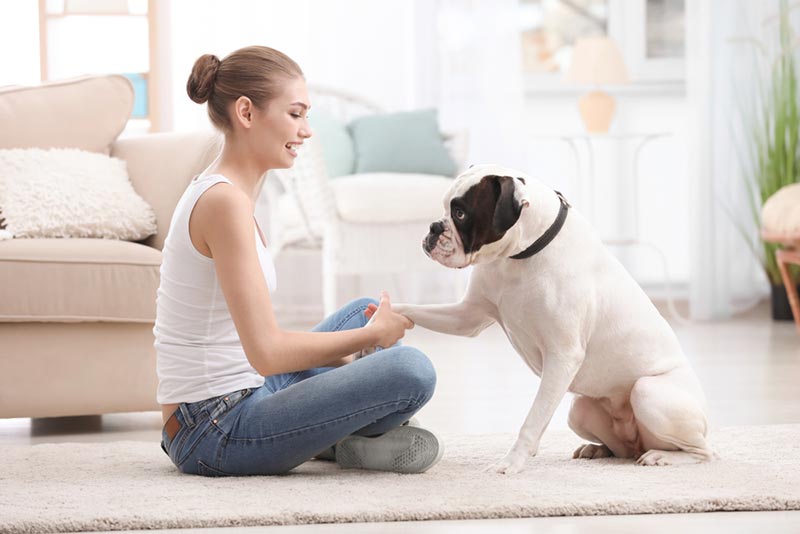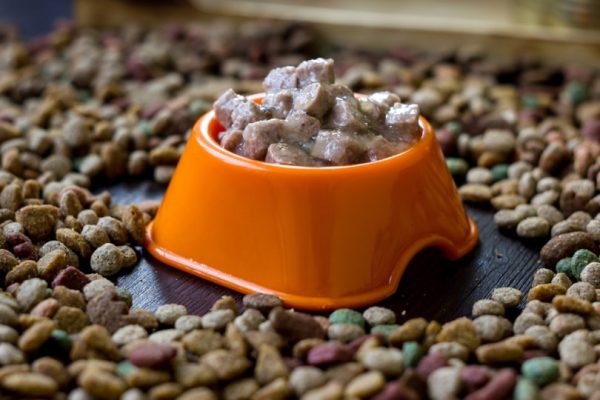According to the American Kennel Club (AKC),1 one in five dogs suffers from osteoarthritis, which is the inflammation of one or more joints, which results in mobility issues, pain and stiffness. It’s commonly seen in older dogs and can affect any joint in the body, so you may notice your dog slowing down or struggling to get up and down steps or onto furniture.
If you suspect your dog has arthritis, it’s crucial to schedule an appointment with your vet and develop a management plan. While arthritis has no definitive treatment, there are ways you can help your dog manage the ailment..

The 10 Tips How to Help a Dog With Arthritis at Home
1. Keep Your Dog at a Healthy Weight
Every extra ounce your dog carries puts added stress on the joints, leading to worsening symptoms and more joint damage. Helping your dog maintain a healthy weight will minimize the pain and damage to help your dog live more comfortably.
If you’ve already been trying to reduce your dog’s weight unsuccessfully, speak with your vet. There may be an underlying medical condition contributing to weight gain.
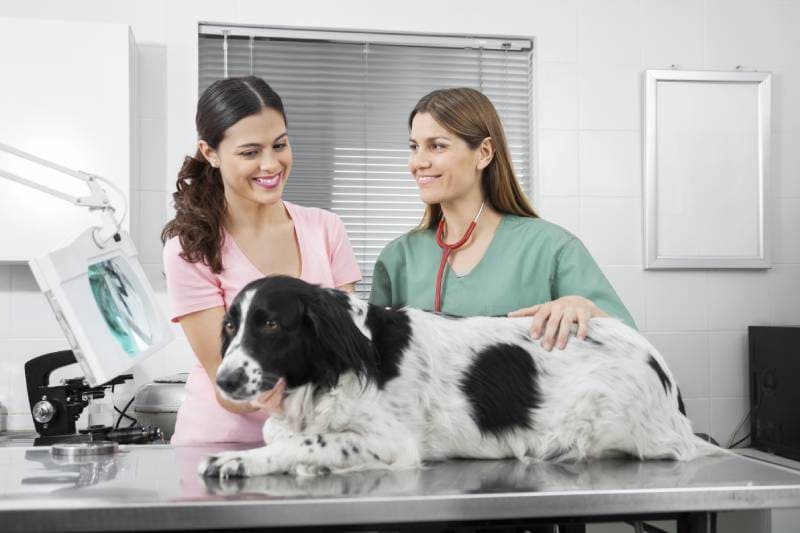
2. Get Your Dog on a Proper Diet
Some research suggests that fatty acids can reduce joint inflammation and limit the damage to cartilage caused by arthritis. Ask your veterinarian about food options that provide omega-3 fatty acids like EPA and DHA to support your dog’s health.
3. Try Joint Supplements
Some studies show that over-the-counter glucosamine and chondroitin sulfate supplements can help with joint pain and arthritis in dogs. Supplements aren’t well regulated, however, so be sure to do your research and speak with your vet about whether these supplements are safe and appropriate for your dog.
If you need to speak with a vet but can't get to one, head over to PangoVet. It's our online service where you can talk to a vet online and get the advice you need for your dog — all at an affordable price!
4. Include Light Exercise
Depending on the severity of your dog’s arthritis, light exercise can help keep joints supple and mobile. Your dog’s exercise tolerance and requirements depend on many factors, but you can start slowly with 10 or 15 minutes of exercise twice a day to see how it’s tolerated. Low-impact exercises, such as swimming, are ideal.
5. Try Physical Rehabilitation
Though it may not be an option for everyone, large private practice clinics and university veterinary hospitals often offer animal physical rehabilitation. It can be just as beneficial for dogs as people with techniques like heat, massage, range-of-motion exercises, and stretching, as well as water treadmills, electric stimulation, and ultrasound therapy.

6. Consider Acupuncture and Massage Therapy
Although there’s not a lot of research on the subject, there’s anecdotal evidence to suggest that acupuncture and massage therapy can relieve pain associated with arthritis and other joint conditions in dogs.
7. Keep Nails Trimmed
Long nails can make your dog’s pain and mobility issues with arthritis much worse. When nails are too long, your dog’s natural foot movement and gait are negatively affected, leading to more pain or discomfort.
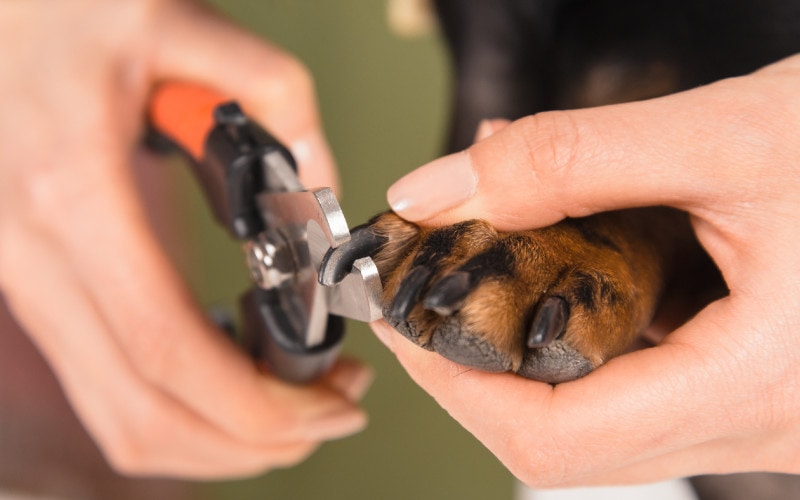
8. Add Traction
Walking on slippery surfaces can be scary for your dog, especially if it’s already in pain. If your dog is struggling to gain traction on your tile or hardwood floors, consider dog socks with traction grips or boots that offer more stability and reduce injury. Another option is toe grips, or small rubber grips that go on the toenails to give your dog better traction.
9. Modify Your Home
If your dog has joint pain, simple activities like jumping onto the bed or couch can become much more difficult. Ramps and dog stairs can give your dog better access to its favorite furniture with stability and confidence, but note that it may take some training to get your dog used to the new routine.
You may want to add some other modifications, such as baby gates, to block dangerous areas like stairs if your dog struggles to get up and down them.
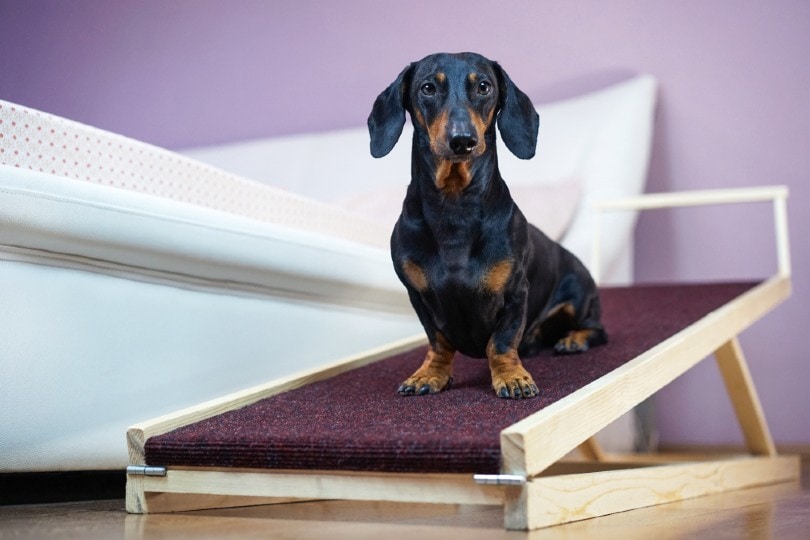
10. Get Multiple Comfy Dog Beds
Even if you have steps or a ramp, your dog may feel more comfortable with beds it can get in and out of without a lot of effort. Don’t skimp! Get big, thick beds like memory foam dog beds or orthopedic beds that are designed to support older or arthritic dogs.

How to Manage Arthritis
There’s no cure for arthritis, so the best approach you can take is to try to delay or prevent arthritis before its onset.
Ideally, this will start when you have a puppy. If you’re getting a puppy from a breeder, be sure to ask about the parents’ joint health, particularly in the knees and elbows, and have your veterinarian evaluate the dog’s conformation. Reputable breeders take steps to reduce the risk of litters with joint problems.
Puppies, especially small-breed puppies, should be discouraged from jumping on and off furniture. This can lead to injuries and arthritis later in life. If you have a natural jumper, such as a Border Collie, Corgi, or Papillon, consider working with an agility trainer to learn proper jumping form and prevent injuries.
You should also keep your dog a healthy weight throughout their life. Overfeeding may make your dog happy, just like you feel when you eat dessert or junk food, but it doesn’t support long-term health. Keeping those extra pounds off will help your dog’s joints stay healthier for longer.

Conclusion
Arthritis is common in humans and animals, especially with old age, but it doesn’t have to be limiting. Combined with interventions from your veterinarian, at-home remedies and modifications can alleviate pain, promote better mobility, and maintain your dog’s quality of life longer.
Featured Image Credit: Africa Studio, Shutterstock

